Tenerife: The history in a timeline
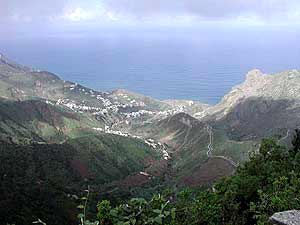 Tenerife has a long history. In our timeline you will find some important information and occurrences of the Island.
Tenerife has a long history. In our timeline you will find some important information and occurrences of the Island.
Around 20 till 3 million years before Christ
The Canary Islands has arisen due to volcanic eruptions. The Islands in the east are much older than (up to 20 million years) the Islands in the west. Tenerife belongs to the Islands in the west and have an approximately age of 3 million years.
400 years B.C. until one century after Christ
The Islands get settled by the Guanchen.
Around 150 after Christos
Claudius Ptolemäus - a Greek mathematician and geologist - put the prime meridian to the western boundary of Orchilla (Westkap El Hierros).
1280 to 1330
Traders of Genoa visited the Canary Islands. One of the traders was Lancilotto Malocello, who eventually gave the island Lanzarote its name.
1339
The Islas Canarias are mentioned for the first time by name on a marine chart.
1340 to 1342
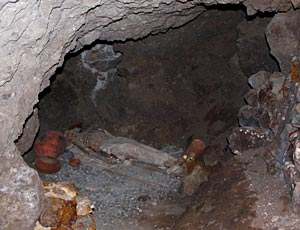 In this time, the Spaniards and the Portuguese did raids and got slaves.
In this time, the Spaniards and the Portuguese did raids and got slaves.
1402
Jean de Bethencourt was an aristocrat of the Normandy. He occupied Lanzarote and is called the "king of the Canary Islands".
1402 to 1405
Bethencourt conquered further Canary Islands for Spain and gets them to enfeoff by the king.
1405
After the successfully conquer of Fuerteventura and El Hierro, Jean de Bethencourt tried to conquer Gran Canaria and Las Palmas but he failed.
1406
Bethencourt is leaving the Canary region and returns to the mainland.
1406 to 1415
Maciot de Bethencourt, is the nephew of Jean de Bethencourt and takes over the administration of the Canary Islands his uncle conquered. In 1415 he gets dismissed.
1479
Due to the conquers of the Portuguese and the Spaniards it wasn't exactly sure where the Canary Islands belong to. But in 1479 they drew up a contract and since that day, the Canary Islands belong to Spain.
1482
Submission of the Island Gran Canaria.
1492
Christoph Columbus started his first expedition from La Gomera. In the following years he came back to the Canary Islands very often. In 1492 he reported about a volcanic eruption of the Teide.
1492 to 1493
Alonso Fernandez de Lugo is an aristocrat of Andalusia and conquered the Island La Palma.
1492 to 1496
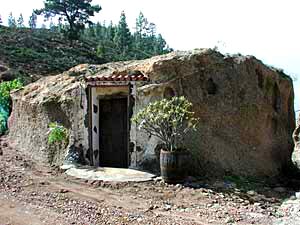 Tenerife is the last of the Canary Island that has been conquered and is now subordinated to the Spanish king. This was really bad for the natives because from now on they have to pay dues to the Spanish king.
Tenerife is the last of the Canary Island that has been conquered and is now subordinated to the Spanish king. This was really bad for the natives because from now on they have to pay dues to the Spanish king.
1496
La Laguna becomes the capital city of Tenerife.
End of the 15th century
The first banana trees and vinery arrive on Tenerife.
Since 1500
Sugar cane cultivation by slaves.
Since 1520
The first Canary wine gets shipped to England.
1537
The slaves trade gets prohibited
End of the 16th century till the 18th century
England tries to conquer the region of the Canary Islands. The number of pirate-attacks is rising.
18th century
Many inhabitants of the Canaries emigrate. The most popular destinations are Cuba and Venezuela.
1723
Santa Cruz de Tenerife becomes the administration headquarter of Tenerife.
1778
Santa Cruz gets the trade-permission with America.
1797
Horatio Nelson was a British admiral and tried to conquer the Canary Island Tenerife but also he failed.
1799
Alexander von Humboldt visited Tenerife. After 5 days he continued his journey to South America.
1817
Foundation of the University of La Laguna.
1822
The new capital city of the Canary Islands is: Santa Cruz de Tenerife.
1830
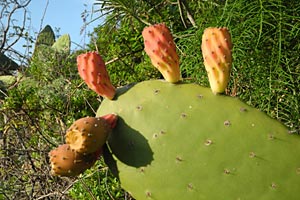 A small insect provides a huge economic boom: the cochineal. This coveted louse gets bred on special cactuses.
A small insect provides a huge economic boom: the cochineal. This coveted louse gets bred on special cactuses.
1852
Queen Isabella II. declares the Canary Islands to a free trade zone.
End of the 29th century
Production and export of bananas become the main economic sector.
1927
The Canary Islands got separated in two boondocks. From now on Tenerife, La Gomera, El Hierro and La Palma belong to the province Santa Cruz de Tenerife. The islands Gran Canaria, Lanzarote and Fuerteventura belong to the province Las Palmas de Gran Canaria
1936
General Francisco Behamonde Franco is a former military governor of the Canary Islands and plans a military coup in the north of Tenerife (in the Esperanza forest). A Spanish civil war starts. Franco wins and from now on Spain has to suffer of a terrible military dictatorship of the general.
Second World War
After the war is over Spain does not become a member of the UNO but it gets economic support from the United States of America.
1955
Spain becomes a member of the United Nations.
Since 1960
Tenerife becomes a touristic destination since the start of the charter flights.
1971
The Volcán de Teneguía on the Island La Palma burst out. So far this is the last volcanic eruption on the Canary Islands.
1975
The General Franco dies and King Juan Carlos becomes the sovereign of Spain.
1978
The new democratic constitution becomes law.
The Canary boondocks become the autonomist region Canary but the administrations stay separated.
1982
Spain becomes a member of the NATO.
1983
Like the other 16 autonomist regions of the Spanish mainland, the Canary Islands get their own regional polities and chosen parlement.
1986
Spain becomes a member of the EU. There is a special agreement for the Canary Island.
1991
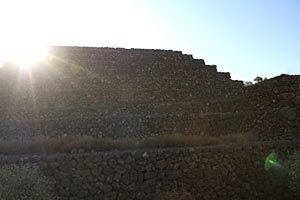 They found the Pirámids of Güimar and between 1991 till 1998 the Pyramids got dug out by archaeologists of the University La Laguna.
They found the Pirámids of Güimar and between 1991 till 1998 the Pyramids got dug out by archaeologists of the University La Laguna.
Thor Heyerdahl, believes in the diffusions and in pre-historic high-sea-sailing and was a big part of the discovering of the pyramids. He convinced a businessman of Norway to buy the place of discovery and to get rid of the rubbish.
After a while the archaeologists of the University La Laguna agreed to do test-digging and took over this project.
1993
The Canary Islands get officially recognized as a member of the EU.
1996
The end of the former special status of the Canaries in the EU.
2004
Orange alert: The Teide has volcanic activities.
2006
Due to the strategic favourable position of Tenerife, they want to use the Island as a logistic base for the economic development of Africa.
2015
The number of arriving refugees on Tenerife is rising.
The history of Tenerife is very interesting. Discover the Island by your own and look at the remains of long gone times.
- Introduction
- History of Tenerife - timeline
- Guanchen on Tenerife
- colonial era
- Thor Heyerdahl discoverer of the Pyramids

- South Los Gigantes / Puerto Santiago
- 4 Guests / ca. 100 m²
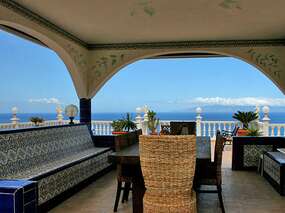
- South Los Gigantes / Puerto Santiago
- 3 Guests / ca. 70 m²
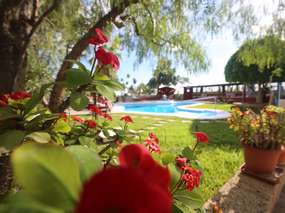
- South Granadilla / El Salto & Umland
- 3 Guests / ca. 52 m²
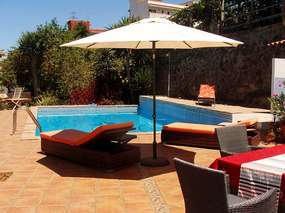
- North La Matanza
- 3 Guests / ca. 70 m²